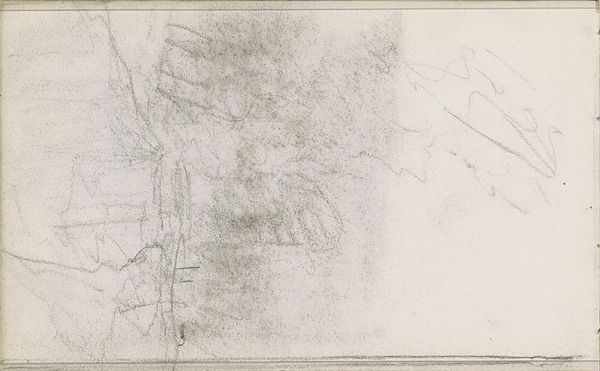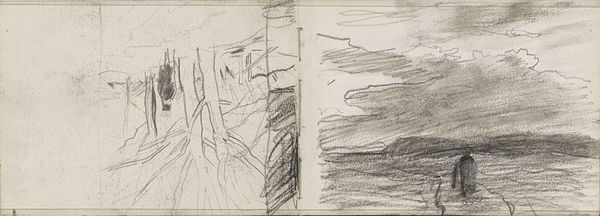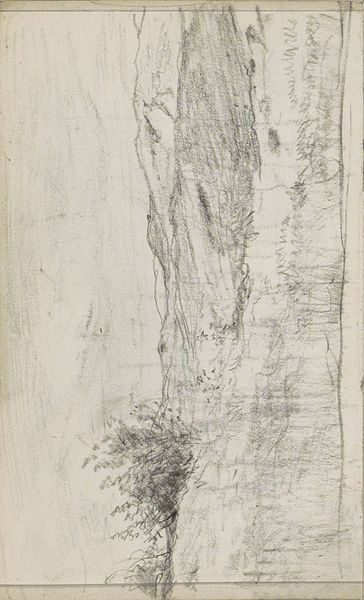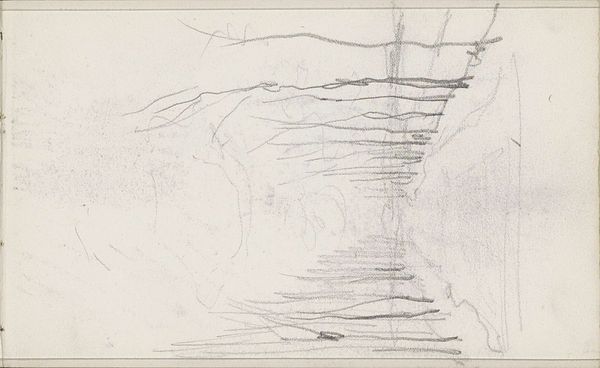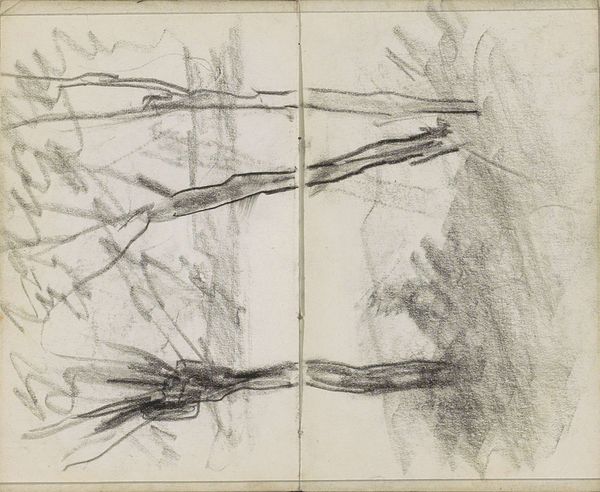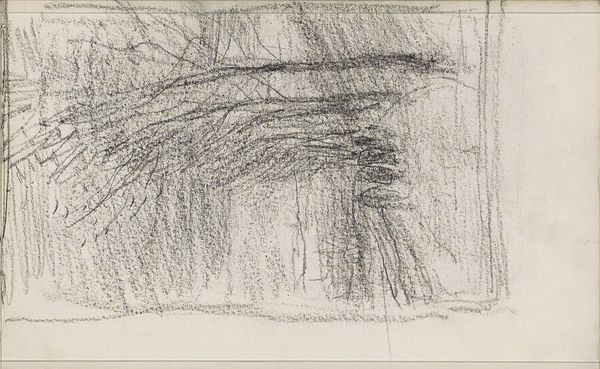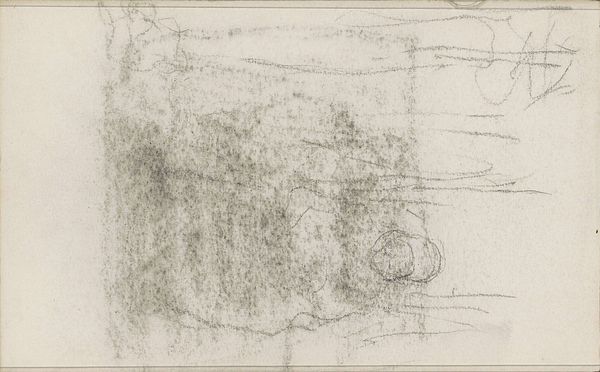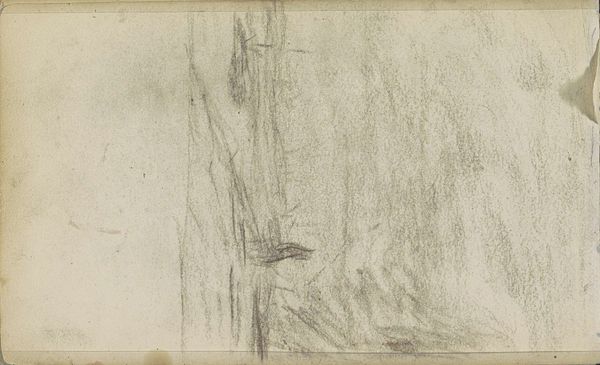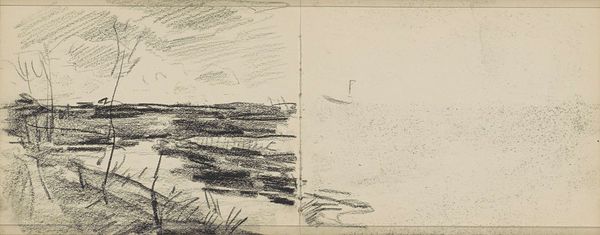
drawing, graphite
#
tree
#
drawing
#
amateur sketch
#
toned paper
#
light pencil work
#
impressionism
#
pencil sketch
#
sketched
#
incomplete sketchy
#
landscape
#
personal sketchbook
#
detailed observational sketch
#
pen-ink sketch
#
graphite
#
realism
#
initial sketch
Copyright: Rijks Museum: Open Domain
Editor: We're looking at "Landscape with a Row of Trees and a Fence" by Anton Mauve, made sometime between 1848 and 1888. It's a drawing, seemingly in graphite. The scene is divided into two sections and looks like an incomplete sketchbook page. What do you see in this sketch? Curator: What immediately strikes me is the artist’s attention to capturing a specific moment in time, not just an idealized landscape. Think about the rise of Realism and Impressionism during this period. Artists were moving away from grand historical narratives to scenes of everyday life. The subject matter, while seemingly mundane, speaks to a larger cultural shift towards valuing the ordinary. Editor: That makes sense. I see the fence as a marker between public and private space. Curator: Exactly! How do you think the fence functions within the composition, both visually and conceptually? Consider its placement. Editor: Well, it divides the rough, densely sketched side with the fence and trees and then the other more empty space to the right of the image with what appears to be an unfinished animal drawing, or something of that sort? Curator: Precisely. Think of it as a boundary between the wildness of nature and the beginnings of domestication, maybe reflecting anxieties or aspirations around land use and ownership prevalent at the time. How do these elements engage with broader social themes? Editor: That is interesting. I never considered it in light of the broader social context of land ownership. Curator: Right? It provides insight into not only Mauve’s artistic practice, but also the complex relationship between humans and the natural world during this era. Editor: I see it now! Looking at it this way helps me understand that it's more than just an amateur sketch, but a glimpse into the societal values of the time. Curator: Indeed. By viewing art as a product of its time, it encourages us to question the values embedded within.
Comments
No comments
Be the first to comment and join the conversation on the ultimate creative platform.
